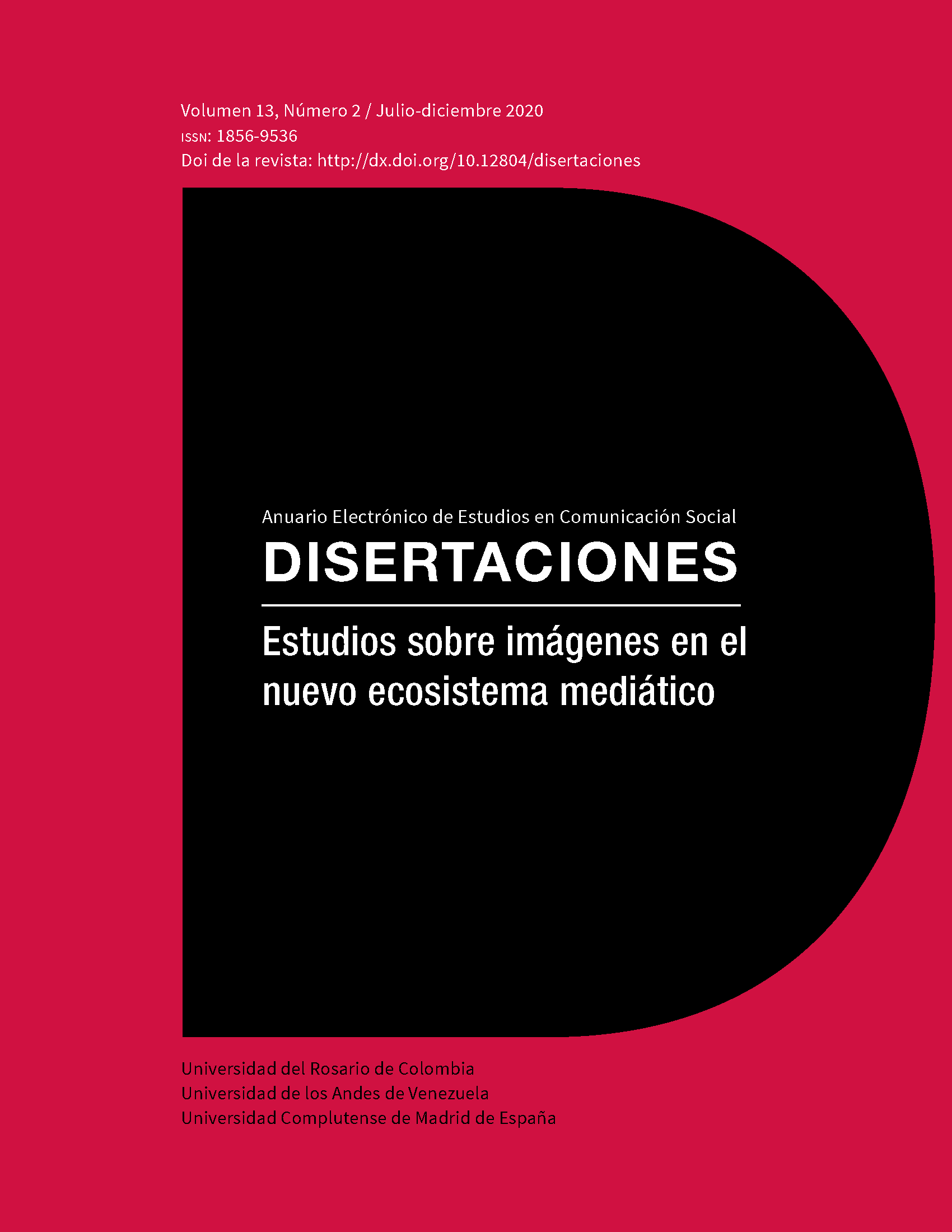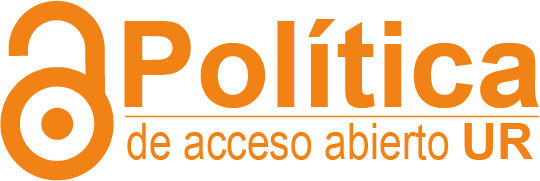El poder de Twitter en la comunicación investigativa en la áreas de la educación, marketing y política
Barra lateral del artículo
Contenido principal del artículo
Twitter es una red social de amplio uso a nivel mundial, caracterizada por suministrar información en tiempo real, permitiendo la interacción entre personas en relación con un tema en particular. El objetivo de esta investigación fue evaluar el uso de Twitter a nivel de Sudamérica, en las áreas de educación, marketing y política, en los últimos cinco años. Para procesar la información se emplearon las técnicas estadísticas: análisis Biplot, clúster y comparativo, mediante la técnica del Modelo Lineal General (GLM). Como resultado, se destaca que los países de Sudamérica que más utilizan Twitter en las áreas citadas son: Argentina, Brasil y Chile. Twitter tiene múltiples aplicaciones de gran utilidad en el área científica para la toma rápida de decisiones, lo que minimiza costos y maximiza la probabilidad de éxito en un objetivo dado.
Descargas
Luis Fernando Restrepo Betancur, Universidad de Antioquia Colombia
Docente Titular Universidad de Antioquia, Estadístico Esp en Estadística y Biomatemática.Acar, A. y Muraki, Y. (2011). Twitter for crisis communication: Lessons learned from
Japan’s tsunami disaster. International Journal of Web Based Communities, 7(3), 392–402. https://www.inderscienceonline.com/doi/abs/10.1504/IJWBC.2011.041206
Amir, M., Sampson, B. P., Endly, D., Tamai, J. M., Henley, J., Brewer, A. C., Dellavalle,
R. P. (2014). Social Networking Sites. JAMA Dermatology, 150(1), 56. https://www.ncbi.nlm.nih.gov/pubmed/24196212
Bakshy, E., Hofman, J. Mason, W. y Watts, D. (2011). Everyone’s an influencer: Quantifying influence on Twitter. In Proceedings of the 4th ACMInternational Conference onWeb Search and Data Mining (WSDM’11). ACM, New York, NY, 65–74. http://snap.stanford.edu/class/cs224w-readings/bakshy11influencers.pdf
Bista, K. (2015). Is Twitter a pedagogical tool in higher Education? Perspectives of
education graduate students. Journal of the Scholarship of Teaching and Learning, 15(2), 83. https://scholarworks.iu.edu/journals/index.php/josotl/article/view/12825
Bollen, J., Mao, H., y Zeng, X. (2011). Twitter mood predicts the stock market. Journal of
Computer Science 2, 1, 1–8. https://arxiv.org/pdf/1010.3003.pdf
Bozarth, J. (2010). Social media for trainers: Techniques for enhancing and extending
learning (1ra ed.). San Francisco, CA: John Wiley and Sons, Inc. Pages 192. ISBN: 978-0-470-63106-5.
Campos, E. (2017). “Twitter y la comunicación política”. El profesional de la información,
v. 26, n. 5, pp. 785-793. https://www.google.com/search?q=Campos%2C+E.+(2017).
Cardona, D., Grau, A., Sorokin, I., Leinwand, G. y Welliver, C. (2016). Introducing the
Twitter Impact Factor: An Objective Measure of Urology’s Academic Impact on Twitter. Published by Elsevier B.V. on behalf of European Association of Urology. Volumen 2, pp 4 1 2 – 4 1 7. https://www.eu-focus.europeanurology.com/article/S2405-4569(16)30008-6/fulltext
Carpenter, J.P. y Krutka, D.G. (2014). How and Why Educators Use Twitter: A Survey of
the Field. Journal of Research on Technology in Education, 46(4), 414-434.
Cronin, J. J. (2011). The classroom as a virtual community: An experience with student
backchannel discourse. Business Education Innovation Journal, 3(2), 56e65.
Evans, C. (2014). Twitter for teaching: Can social media be used to enhance the process of
learning?: Twitter for teaching. British Journal of Educational Technology, 45(5), 902e915.
Eysenbach, G. (2011). Can tweets predict citations? Metrics of social impact based on
Twitter and correlation with traditional metrics of scientific impact. Journal of Medical Internet Research. 13(4).
Fox, B. I. y Varadarajan, R. (2011). Use of Twitter to encourage interaction in a multi-
campus pharmacy management course. American Journal of Pharmaceutical Education, 75(5), 1-8. https://www.ncbi.nlm.nih.gov/pmc/articles/PMC3142990/
Gainous, J. y Wagner, K. M. (2014). Tweeting to power: The social media revolution in
American politics. New York, NY: Oxford University Press.
Gladwell, M. (2010). Small Change: Why the revolution will not be tweeted. The New
York.
Grajales, F.J., Sheps, S., Ho, K., Lauscher, H. y Eysenbach, G. (2014). Social media: a
review and tutorial of applications in medicine and health care. J. Med. Internet Res. 16 (2), e13.
Hale, H. E. (2013). Explaining Moldova’s ‘Twitter Revolution that wasn’t’, Ponars Eurasia,
Working Paper. Elliott School of International Affairs. George Washington University.
Haustein, S., Peters, I., Bar-Ilan, J. Priem, J. Shema, H. y Terliesner, J. (2014). Coverage
and adoption of altmetrics sources in the bibliometric community. Scientometrics. 101: 1145±1163.
Haustein, S. D. Bowman, T. Holmberg, K. Peters, I. y Larivière, V. (2014). Astrophysicists
on Twitter An in-depth analysis of tweeting and scientific publication behavior. Aslib Journal of Information Management. 66(3) (2014) 279-296.
Holmberg, K., Thelwall, M. (2014). Disciplinary Differences in Twitter Scholarly School
of Technology, University of Wolverhampton Wulfruna Street, Wolverhampton WV1 1LY, UK. communication. Scientometrics.
Jackson, D., Waine, M.L. y Hutchinson, M., (2015). Blogs as a way to elicit feedback on
research and engage stakeholders. Int. J. Res. Methodol. Nurs. Healthc. 22 (3), 41–47.
Kapp, J., Hensel, B., Kyle, T. y Schnoring B. (2015). Is Twitter a forum for disseminating
research to health policy makers?. Annals of Epidemiology. Vol 25. Pages 883-887.
Ke, Q., Ahn, Y.Y y Sugimoto, CR. (2017). A systematic identification and analysis of
scientists on Twitter. PLoS One. 12(4): e0175368.
Kelly, B. S., Redmond, C. E., Nason, G. J., Healy, G. M., Horgan, N. A. y Heffernan, E. J.
(2016). The Use of Twitter by Radiology Journals: An Analysis of Twitter Activity and Impact Factor. Journal of the American College of Radiology, 13(11), 1391–1396.
Kleinfield, N. y Buckley, C. (2011). Wall Street occupiers, protesting till whenever, New
York Times.
Kop, R. (2011). The challenges to connectivist learning on open online networks: Learning
experiences during a massive open online course. The International Review Of Research In Open And Distributed Learning, 12(3), 19e38.
Kortelainen, T. y Katvala, M. (2012). “Everything is plentiful—Except attention”.
Attention data of scientific journals on social web tools. Journal of Informetrics, 6(4), 661–668.
Liebert, M.A., (2009). Twittering Healthcare: social media and medicine. Telemed. e-
Health. 15 (6), 507–510.
McGregor, S. C., Lawrence, R. G. y Cardona, A. (2015). Personalization, gender, and
social media: Gubernatorial candidates’ social media strategies. Presented at 2015 ICA annual conference, San Juan, PR.
Mette, C. (2009). Using Twitter in EFL Education. Jaltcall journal. Vol, 5 No. 3. Pages 41-
Miyabe, M., Miura, A. y Aramaki, E. (2012). Use trend analysis of twitter after the great
East Japan earthquake. Paper presented at the ACM 2012 conference on Computer Supported Cooperative Work Companion, Bellevue, WA.
Mohammadi, E., Thelwall, M., Kwasny, M. y Holmes, K.L. (2018). Academic information
on Twitter: A user survey. PLoS ONE 13(5): e0197265.
Moorley, C. y Chinn, T. (2014). Nursing and twitter: creating an online community using
hashtags. Collegian. 21 (2), 103–109.
Nason, G., O'Kelly, F., Kelly, M., Phelan, N., Manecksha, R., Lawrentschuk, N. y Murphy,
D. (2015). The emerging use of Twitter by urological journals. BJU Int; 115: 486–490.
Ovadia, S. (2009). Internet connection: Exploring the potential of Twitter as a research tool. Behavioral & Social Sciences Librarian, 28, 202-205.
Power, A. (2014). Twitter’s potential to enhance professional networking. Br. J. Midwifery
(1), 65–67.
Ross, C., Terras, C., Warwick, M., Welsh, A. Enabled Backchannel: Conference Twitter
use by Digital Humanists. J Doc. 2011; 67: 214±237.
Sakaki, T., Okazaki, M. y Matsuo. (2010). Earthquake shakes Twitter users: Real-time
event detection by social sensors. In Proceedings of the 19th International Conference on World Wide Web (WWW’10). ACM, New York, NY, 851–860.
Sebba, J. (2013). An exploratory review of the role of research mediators in social science.
Evid. Policy. 9 (3), 391–408.
Shannon, C. McGregor, R. y Logan, M. (2017). Twitter as a tool for and object of political
and electoral activity: Considering electoral context and variance among actors. Journal of Information Technology & Politics. 14:2. Pages 154-167.
Shaojung, S.W. (2016). To Tweet or Not to Tweet: Factors Affecting the Intensity of
Twitter Usage in Japan and the Online and Offline Sociocultural Norms. International Journal of Communication 10, 2637–2660.
Skrypnyk, O., Joksimovi, S., Kovanovi, V., Ga, D. y Dawson, S. (2015). Roles of course
facilitators, learners, and technology in the flow of information of a cMOOC. International Review of Research in Open and Distance Learning, 16(3), 188e217.
Smith, C. (2013). How Many People Use the Top Social Media, Apps & Services. From
Digital Marketing Ramblings: http://expanded ramblings.com/index.php/ resource-how-many-peopleuse-the-top-social-media/.
Thackeray, R., Burton, S., Giraud, C., Rollins, S. y Draper, C. (2013). Using Twitter for
breast cancer prevention: an analysis of breast cancer awareness month. BMC Cáncer.
Detalles del artículo

Esta obra está bajo una licencia internacional Creative Commons Atribución-NoComercial-SinDerivadas 4.0.
Artículos más leídos del mismo autor/a
- Luis Fernando Restrepo Betancur, Preferencia por los colores en universitarios de la ciudad de Medellín, Colombia , Anuario Electrónico de Estudios en Comunicación Social "Disertaciones": Vol. 15 Núm. 1 (2022): Grupos minoritarios y estigmatizados: diversidad funcional, religiosa, étnica, afectivo-sexual o de identidad de género en la comunicación




